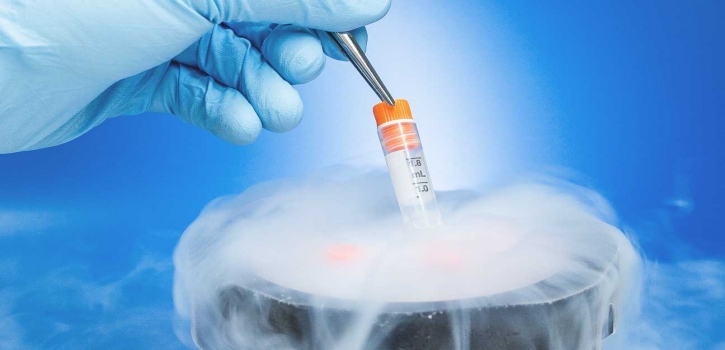
Vitrification has improved the success of cryopreservation and increased likelihood of conception. For many years, freezing sperm, eggs and embryos for later use has been part of reproductive science. The traditional freezing process is flawed because water collects and ice crystals form during the time it takes to move a substance from room temperature to freezing.
Vitrification is a fast freezing process that prevents the formation of ice crystals and thus it provides protection to cells from damage. In general, we can say that it is a method of transforming something into a glass like substance. It is used for cryopreservation of eggs, embryos, and sperm. The old methods involved a slow freeze, while vitrification is extremely quick where an embryo or egg is cooled off by thousands of degrees per minute.
Benefits of vitrification over traditional freezing-
The damage caused to vitrified tissue by ice crystals formed with traditional freezing is protected by vitrification. Vitrified tissue looks the same as it did at room temperature. While in case of traditional freezing, a layer of ice crystals is formed on the organ or other tissues and cells that alter the look and physical structure as well.
When is Vitrification used?
It may be used under following situations-
Before undergoing any cancer treatment to preserve fertility-
Some cancer treatments cause sterility. But, before undergoing cancer treatment, if a woman freezes her eggs, or a man freezes his sperm then he or she may still be able to use the sperm or egg after the treatment and can have a child.
Any medical condition that may pose risk to fertility in future-
If a woman is at risk for premature ovarian failure or early menopause, she can freeze her eggs when she is young and still has healthy eggs left.
Freeze embryos after in vitro fertilization (IVF)-
Any extra embryos left during an in vitro fertilization cycle can be cryopreserved with vitrification.
Egg donor banks-
With egg banks, you can get previously frozen eggs when needed to use during IVF.
Male fertility-
Vitrification of sperm starts with sperm harvesting (from a sample given by the patient). First of all, sperm is removed from semen and plasma components. The sperm is placed in a sugar solution and then this solution is plunged into liquid nitrogen to freeze. In this liquid nitrogen solution, vitrified sperm can be held frozen until needed for conception.
Female fertility-
Vitrification is used to freeze eggs and embryos. Harvesting of eggs involves taking prescription medications to promote multiple egg maturation and release. The eggs are removed from the body which are then frozen. In traditional slow freezing, there occurs shrinkage of eggs and ice crystals are formed around the egg wall while the procedure of vitrification literally suspends the egg or embryo in a glass-like state.
Better outcomes are possible for men and women using vitrification as part of reproductive preservation.
